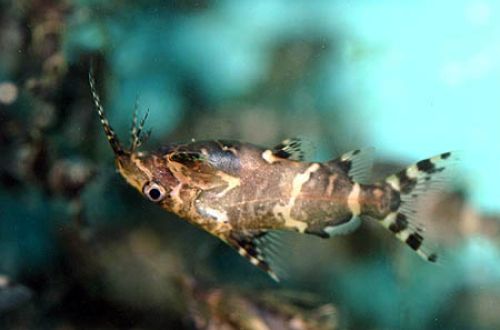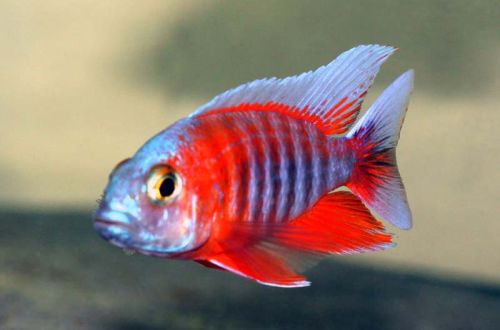
Changeling Catfish
The shifting catfish, scientific name Synodontis nigriventris, belongs to the Mochokidae family. Based on the name, the main feature of this type of catfish becomes clear – the constant being in an inverted position. This way of swimming, coupled with his peaceful disposition and unpretentiousness, allowed him to gain popularity among aquarists around the world.

More than 90% of the time he swims belly up, which is quite normal for him. A similar feature has developed evolutionarily as the method of feeding has changed. Unlike other catfish, the shifter catfish feeds from the surface of the water, and since the structure of the mouth is designed to search for food at the bottom, the most natural solution was to roll over.
Habitat
A native of Africa, lives in numerous tributaries of the Congo Basin (mainly in its middle course). Prefers areas of rivers with dense vegetation, flowing under the dense canopy of a tropical rainforest.
Description
Small humble fish. Adult males barely reach 6 cm, while females grow up to 8–9 cm. The shapeshifter catfish has an elongated slightly flattened body with large eyes and three pairs of antennae near the mouth. The coloration is gray-brown with several dark spots all over the body. The belly is dark and the back is light.
Food
Undemanding to the diet, accepts all types of dry (flakes, granules), live and frozen foods. Feed from the surface, so the food must be floating. Feed 2-3 times a day in the amount eaten in 5 minutes.
Maintenance and care
The design of the aquarium consists of the following mandatory components: soft dark soil (sandy), groups of root and floating plants (for example, anubias, echinodorus), numerous places for shelter in the form of snags, intertwined tree roots, branches. The combination of these three components will create a favorable habitat and satisfy all the needs of the catfish.
The aquarium is filled with soft or medium hard water (dGH), the pH (pH) can vary from slightly acidic to slightly alkaline. This species is undemanding to the hydrochemical composition of water and feels great in a wide range of dGH and pH values. The set of equipment is standard for most aquariums: a filter, a heater, an aerator and a lighting system set to a weak light output.
Regular maintenance, in addition to daily feeding, includes cleaning the soil and glass as necessary, replacing part of the water with fresh water (about 15–20% of the volume once a week), and monitoring water quality.
Behavior
A peaceful schooling fish, it gets along well with most calm, non-aggressive species. The most preferred are those from the same habitat, for example, African tetras. No intraspecific conflicts were noted.
Breeding / breeding
Breeding in home aquaria is possible, but detailed reliable information is almost non-existent. Changeling catfish in the wild spawn during the rainy season, migrating to flooded areas of the forest, so it is obvious that the stimulus for spawning is a change in external conditions – the gradual addition of very soft cool water. It is advisable to carry out such significant water changes in a separate tank – a spawning aquarium.
Caviar is deposited either on a substrate of dense vegetation, or in secluded places under snags (contradictory data are available on this matter). One adult female is able to lay up to 450 eggs, fry appear already on the 4th day. At first, they swim in an upright position, and only at 7–8 weeks of life do they move to the inverted position typical of this species.
Fish diseases
In a balanced aquarium ecosystem, disease outbreaks are extremely rare, problems begin only in advanced cases, when conditions deteriorate significantly (cleaning and water changes are not performed, the aquarium is overcrowded, poor-quality food, monotonous diet, etc.).





